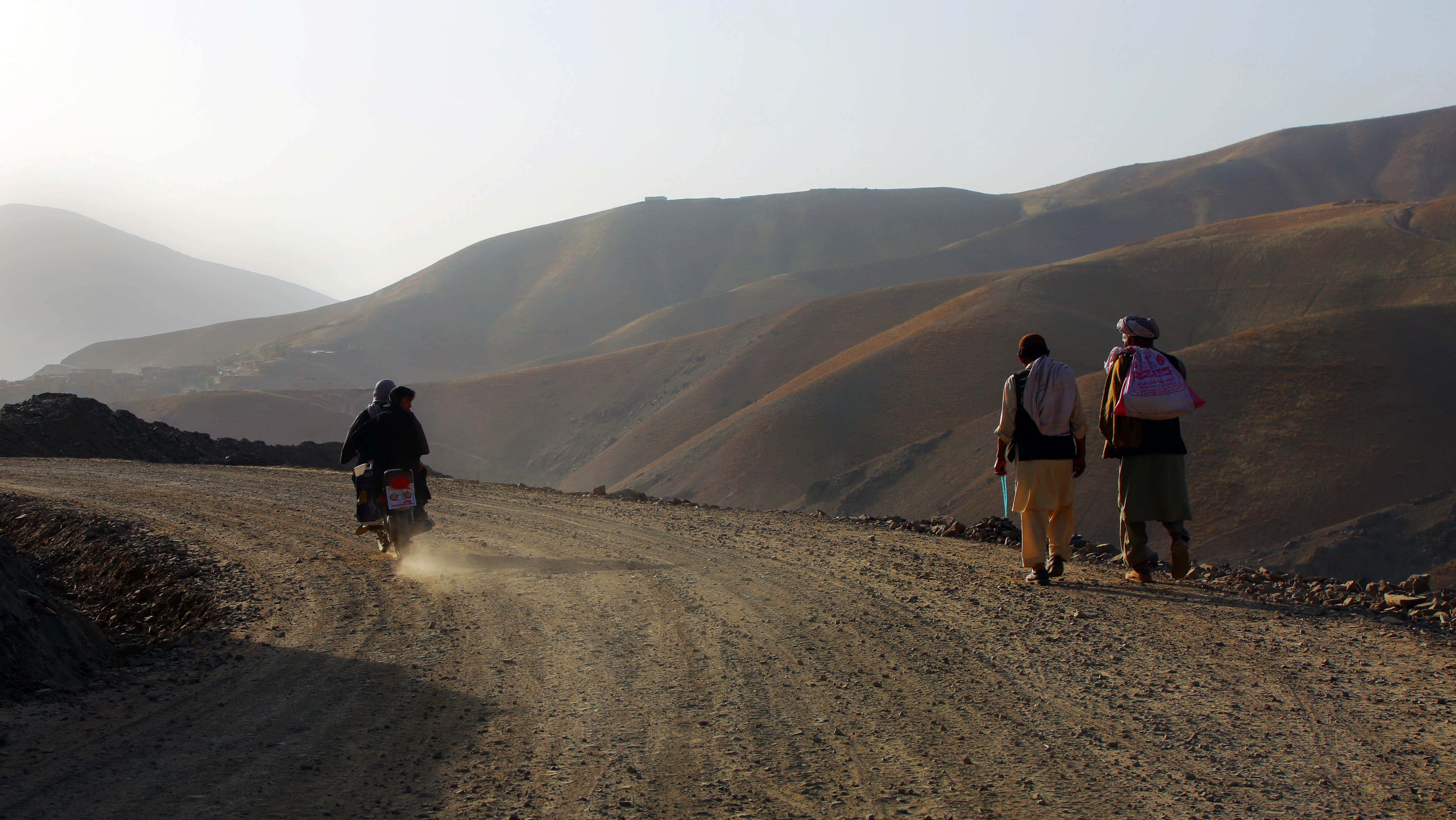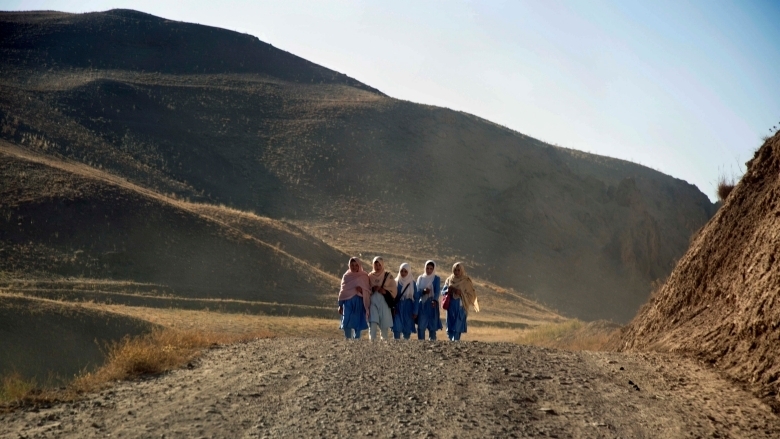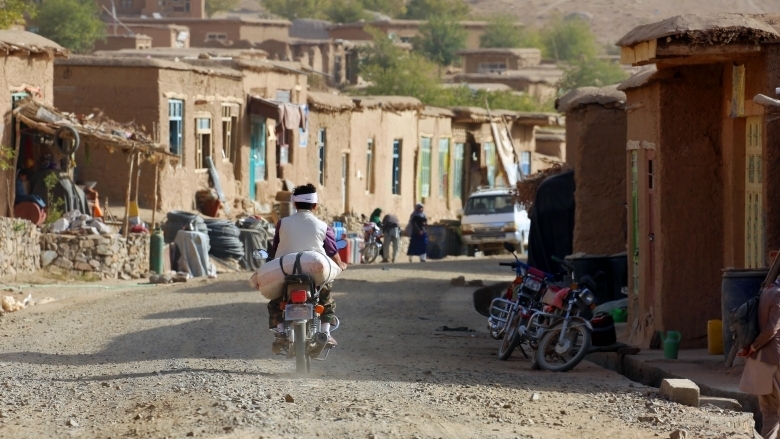SHAHRISTAN DISTRICT, Daykundi Province – An elderly man, with dusty shoes, walks along the rocky road, carrying a package on his back. The road twists around the mountain, amidst views of mud-brick houses. On occasion, vans pass along the road, over loaded with passengers. In some parts, the road is still under construction, workers and machines gravel and pave busily.
Construction of the Shahristan-Nili Road has improved access to facilities for nearby villages. Villagers now access markets, healthcare services, and other destinations more easily, safely, and quickly. “Before the construction of the road, we had to travel 30 hours to reach Kabul,” says Mirza, 47, Community Development Council (CDC). “Now we can reach Kabul in 18 hours, and traveling is easier.”
Tagablor village is located in the Shahristan district of Daykundi Province in central Afghanistan. Since 2014, a private construction firm, tendered through the Ministry of Public Works (MoPW) under the Afghanistan Rural Access Project (ARAP), has been rehabilitating the third phase of the Shahristan-Nili Road.
The road, which is due to finish by the end of 2017, is being widened and paved, ensuring safer travel conditions. “We have seen a dramatic decrease in car accidents because the road is wider and its surface is smoother,” says Mirza. “Two years ago, when the road was not smooth and wide, four people were killed because their car fell off the road into the valley.”
ARAP is a follow-on project of the National Emergency Rural Access Program (NERAP). It is supported by the International Development Association (IDA), the World Bank Group’s fund for the poorest countries, and the Afghanistan Reconstruction Trust Fund (ARTF). ARAP aims to benefit rural communities across Afghanistan by improving access to basic services and facilities through all-weather roads. The project is expected to increase the number of people living within 2 kilometers of all-weather roads, reduce travel time to essential services, and enable rural communities to access these services frequently.



